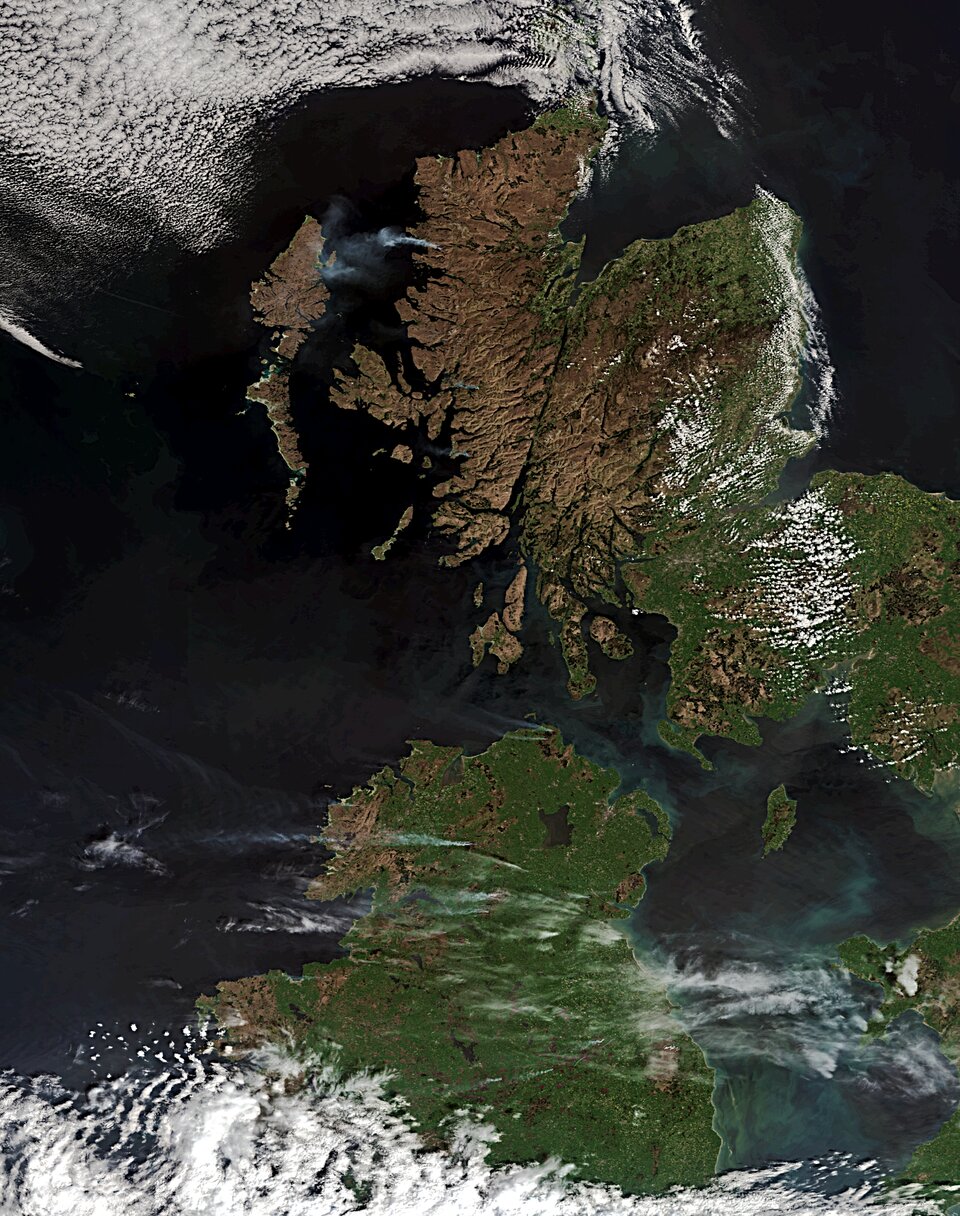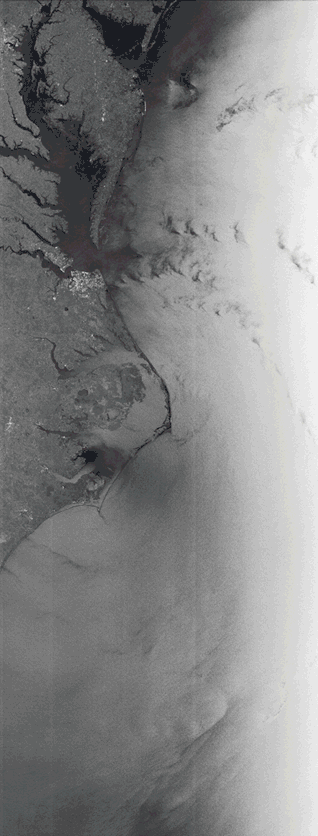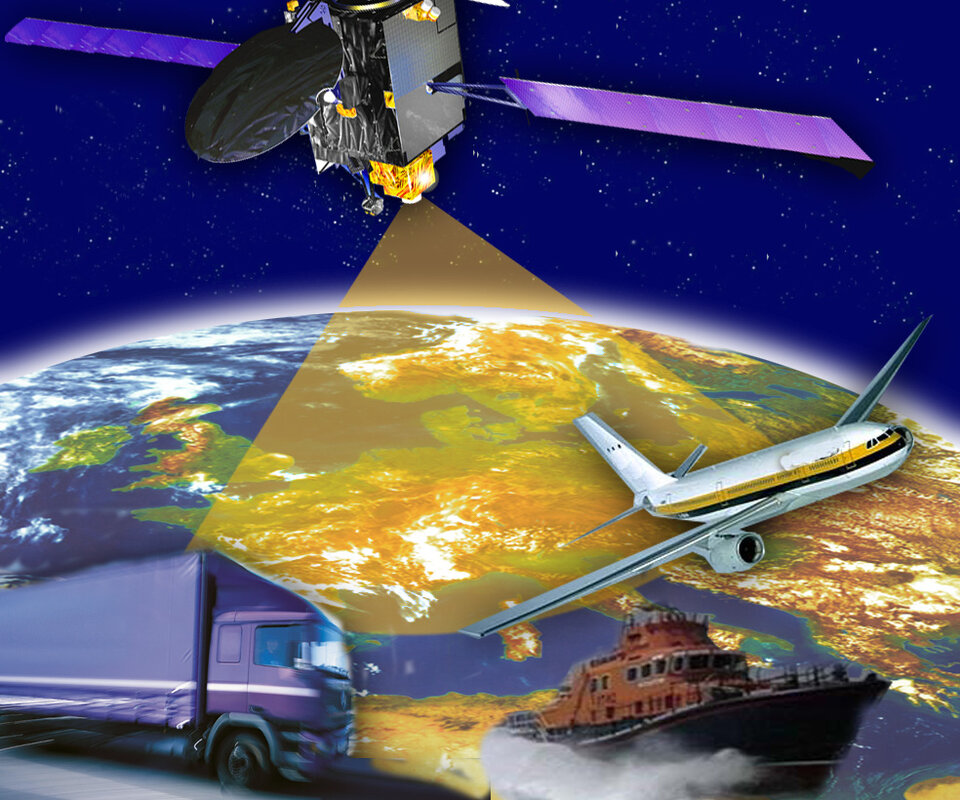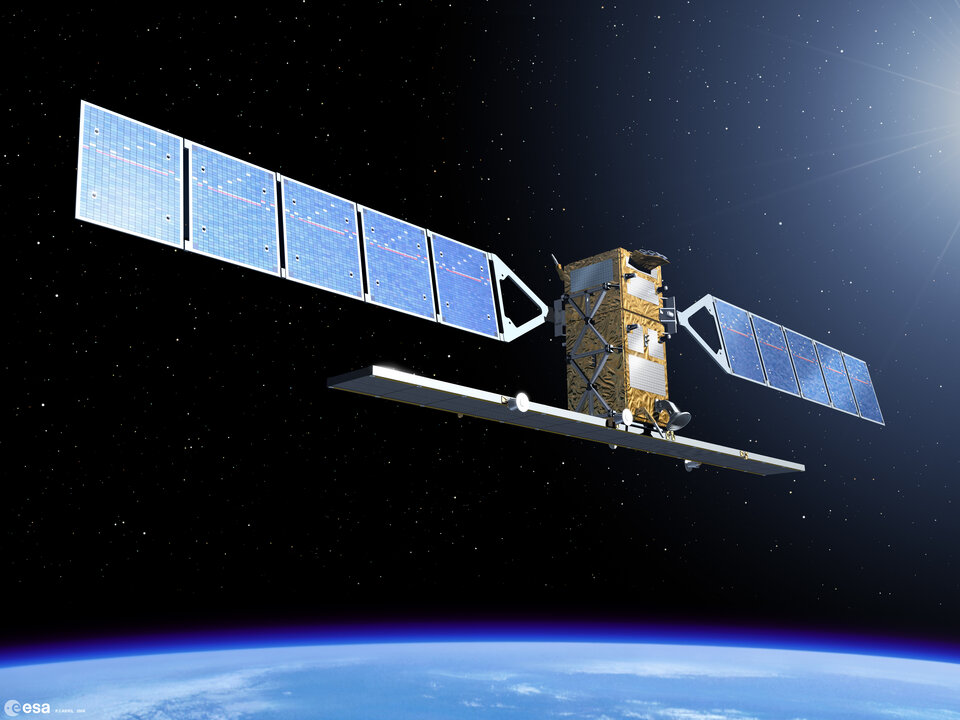ESA DG at ITRE Workshop
Transcript of Jean-Jacques Dordain's speech at the Industry, Research and Energy (ITRE) Committee workshop on ‘Space technologies in support of European policies - transport, environment and agriculture’, Brussels, 13 July 2011 - Translated from French.
Mr Chairman, Members of the European Parliament, Mr Vice-President, ladies and gentlemen, today I am going to talk to you about Earth observation satellites and about satellites which allow us to determine position and time, that is to say, in the case of Europe, Galileo. As Vice-President Tajani was just saying, these satellites are simply tools that allow us to provide a wide range of services to citizens across the globe. This is why when I say citizens I do not refer only to those in Europe but to citizens worldwide.
These satellites gather data on phenomena of global importance, phenomena whose effects are felt across borders and even across entire continents. I am referring to phenomena relating to the environment, climate, meteorology, air and maritime traffic. These are global issues but it is absolutely vital to stress that they can also have very local consequences. Climate change can produce localised effects, whether it be in the form of flooding, drought, or illegal immigration, to name but a few. It is important, therefore, to understand that with satellite systems we have the ability to focus both on global phenomena and on local problems. Consequently, these are services that are of importance to each and every citizen on Earth.
Also, for these tools to be effective, they have to be competitive. Indeed, competitiveness is an integral part of their usefulness. There are two forms of competitiveness, and I believe it is important to be very precise on this point. Firstly, there is the competitiveness of a space solution relative to its terrestrial equivalent. Is an air traffic management system based on navigation satellites more effective than one relying on ground beacons? This is, for example, the case with EGNOS compared with air traffic management based on ground beacons. The second form of competitiveness is entirely different: it is the competitiveness of European solutions compared with non-European ones, in other words, the ways in which European solutions are superior to those supplied by the USA, Russia, China, India and so on. This is why we cannot really talk of services based on space infrastructures without talking about levels of knowledge and competitiveness.

Knowledge, competitiveness, services: these are the three pillars we are seeking to build together. This can be expressed in one phrase: the 'New Space Economy'. I use this phrase because it was the theme of the first ever conference on UK space policy hosted by the University of Warwick on 4 July of this year. I believe it is important to highlight this theme because it is that which I really want to focus on.
I have been asked to say a few words about current European achievements in Earth observation and navigation and Vice-President Tajani has already touched on these themes. I will perhaps concentrate above all on Earth observation since it is that which constitutes the ultimate priority for European Space Agency Member States.
The Earth observation programme is ESA’s largest space programme, ahead of launchers, telecommunications, and human spaceflight. And if you add together ESA’s Earth observation programme, national programmes, and those of the operator Eumetsat and the European Commission, it becomes patently clear that the very highest priority is given to Earth observation in Europe.
There are four strands to Earth observation, the first being Earth and environmental sciences—essentially how we can improve our knowledge of the Earth and its environment; the second is meteorological services; the third is services connected to the environment and security, what we call GMES; and the fourth is defence-related services. I will not be addressing the latter subject today since it principally concerns national activities but will instead focus on our achievements in the first three areas.

Take knowledge for instance. Not many people are aware that the largest environmental satellite ever built was built in Europe: Envisat, a satellite weighing over 7 tons launched in 2002 carrying nine instruments on board. These instruments have now been exploited for ten years, providing data on a daily basis to thousands of users across 70 countries, in other words far beyond Europe’s borders. And now, following on from Envisat, at a rate of one per year on average, we are launching smaller satellites called Earth Explorers dedicated to a specific scientific theme. Each one provides data that is totally unique in the world, improving current global knowledge by one or two orders of magnitude.
The second strand concerns meteorological satellites which we develop in partnership with Eumetsat. We are already on our third generation of meteorological satellites in geostationary orbit and will soon get started on our second generation of meteorological satellites in polar orbit. These meteorological services, too, are among the most competitive in the world and have made it possible to obtain more accurate weather forecasting at a five-day interval. That we are able to forecast the weather reliably five days hence is thanks to the meteorological satellites operated by Eumetsat but the next objective is to obtain forecasts a fortnight in advance, which, if achieved, will have an enormous impact in economic terms, notably in areas where such knowledge of the weather is invaluable, such as farming and tourism.
The third strand is services relating to the environment and security. ESA, together with the French Space Agency CNES, set up the International Charter Space and Major Disasters, which is already over 10 years old. This Charter allows, each time it is invoked, for Charter members to make satellite data available, free of charge, to governmental and non-governmental organisations that request it. Unfortunately, the Charter is currently invoked at a rate of three times a month. The biggest disasters, such as the earthquake in Haiti and the tsunami in Japan remain fresh in our minds, and in such cases satellites and their data have played a vital role in helping rescue operations, as only satellites are capable of rapidly providing a picture of what roads remain passable, and what bridges and landing strips remain usable. Consequently, all of the information provided by satellite is absolutely crucial in helping to ensure that rescue services arrive on the scene rapidly and this speed of response is absolutely crucial when it comes to saving lives.

We also use the satellites available to provide, for instance, services relating to maritime surveillance. We provide a great deal of information on maritime traffic surveillance whether it be to EU agencies such as EMSA, or, to cite another example, to the Italian coastguard, giving information about shipping movements in the Mediterranean. So these are services that are already operational. To improve these services and guarantee their continuity, we are in the process of developing, together with the European Commission, the Sentinel satellites which will be dedicated to providing GMES services. These satellites will begin launching as of 2013 and will therefore be in orbit very soon.
In terms of navigation, as Vice-President Tajani has already said, EGNOS services are now fully operational. Safety-of-life certification allows aircraft to land using EGNOS services. The first three airports in Europe to have developed EGNOS landing procedures are in France. There is Pau, since it is there that the various elements that go to make up Airbus aircraft land prior to assembly in Toulouse, but also Clermont-Ferrand and Le Bourget. We spoke of landing procedures during the Paris Airshow at Le Bourget just a few weeks ago. In comparison with those three airports in Europe, there are 2000 landing procedures in the USA, so I’m sure you will agree that we still have a long way to go, but the important point is that the service now exists in Europe. It is no longer a space matter; it is now a matter for the airports, not satellites, not the Commission, not ESA. The services exist but it is now up to the airports to develop these landing procedures.
We have two Galileo satellites in orbit: GIOVE-A and GIOVE-B. I should stress that GIOVE-B is carrying Galileo technologies on board, which means that these technologies, including the atomic clock and the Galileo signal generator, have been in orbit for three years now, demonstrating day-in, day-out that they are the very best in the world. We have the finest navigation technologies in the world and on 20 October we will join together in Kourou to witness the launch of the first two Galileo satellites.
So to sum up, Europe is competitive, and we need have no concerns in that regard. Indeed, I believe that we lead the field in Earth observation and that we have the best navigation technologies. So that being the case, what problems need to be resolved for the future? They are threefold. Firstly we need to ensure proper exploitation of this infrastructure. I will later conclude my thoughts by focussing on this theme since it is certainly most crucial of all at present.

The second issue we must address is to ensure that, as of today, we are already focussed on preparing future generations of space infrastructures since, unfortunately, one cannot expect to maintain a competitive edge for ever. To remain competitive one must continue to invest in research and technology because in the meantime others are investing and making progress.
The third issue of importance is protecting space infrastructure from debris and solar flares because wherever services are to be associated to space infrastructure we must ensure that the continuity of those operational services is guaranteed.
So how do we ensure that Galileo and GMES infrastructures are properly exploited? Vice-President Tajani and I are in full agreement that the success of Galileo and GMES will not be measured solely in terms of the number of satellites but rather by the number of services available and in particular the robustness of those services provided to citizens.
It is not merely a question of budget, though that aspect is important. There must also be suitable governance if exploitation is to be robust and we still need to work on finding the correct set-up. First of all, it requires operators with the necessary expertise and experience to be able to exploit these infrastructures properly. For us, the model in the meteorological field is Eumetsat. It is worth noting that it took that organisation 15 years to become became fully operational.
The second issue is the data policy, which is absolutely crucial when it comes to the exploitation of space infrastructures. This policy must take account both of needs and the international context, since we are not the only providers of data and we must take account of the interests of the Member States that provide the funding.
The third issue in this regard is international cooperation. Vice-President Tajani also mentioned this aspect: whether it be Galileo or GMES, we are talking about infrastructures which, though European, are providing services to the entire world. International cooperation, therefore, is absolutely key to the success of this exploitation.
But it is also a question of budget. We have all read the proposal issued by the Commission a fortnight ago. I read it with great interest and would like first of all to thank the Commission and in particular Vice-President Tajani for taking a great step forward in providing the necessary budget for exploitation of Galileo. The Commission proposal both addresses the question of Galileo funding and sets it at an appropriate level. This leaves GMES, which is mentioned, albeit outside of what I would term the ordinary budgetary framework. Now this, unfortunately, is a problem for those who, as I speak, are working on developing infrastructures and also for those who are already in the process of delivering services. The fact of placing it outside the ordinary budget places a question mark over the point of launching satellites that may never be exploited and especially over the continuity of these essential services. We should remember that these are services that we provide in the event of floods, forest fires, natural disaster, in response to illegal immigration, and so on. So we must not allow such uncertainty to persist indefinitely. What I would like to see and, needless to say, I am ready to assist the Commission in this regard since the responsibility does not lie with me, are steps being taken to ensure that GMES exploitation is included within the EU budget.

Now there are three good reasons for this. Firstly, because it was on that basis that Member States funded the development—ESA Member States are currently funding two-thirds of the development of the Sentinel satellites from which the GMES services will be provided and they are doing so on the understanding that the EU will fund the exploitation. The second reason is that GMES services are of use to all EU and ESA Member States. There is not a single Member State that can say it has no need for GMES services. It is true that development of the satellites is something that concerns only some Member States. However, the services are of interest to each and every one of them. And the third reason is that I wish to avoid any kind of issue of priority between Galileo and GMES. I consider that Galileo and GMES are of equal importance, and that the need for them is equally critical and urgent. So that is why I am ready to work with the Commission and Parliament in pursuit of the goal of including GMES in the framework of the EU budget because I believe the risks attached to not funding GMES are far greater than any that may arise from its funding.
So this will be my final point. Dear Chairman and Members of Parliament, if you wish, like Vice-President Tajani before you, to see for yourselves the services GMES can provide, you are more than welcome to visit ESRIN in Frascati, Italy. Besides being a most agreeable place, it is also where you can get a true picture of GMES services and what they have to offer, so we look forward to seeing you in Frascati. Thank you.








